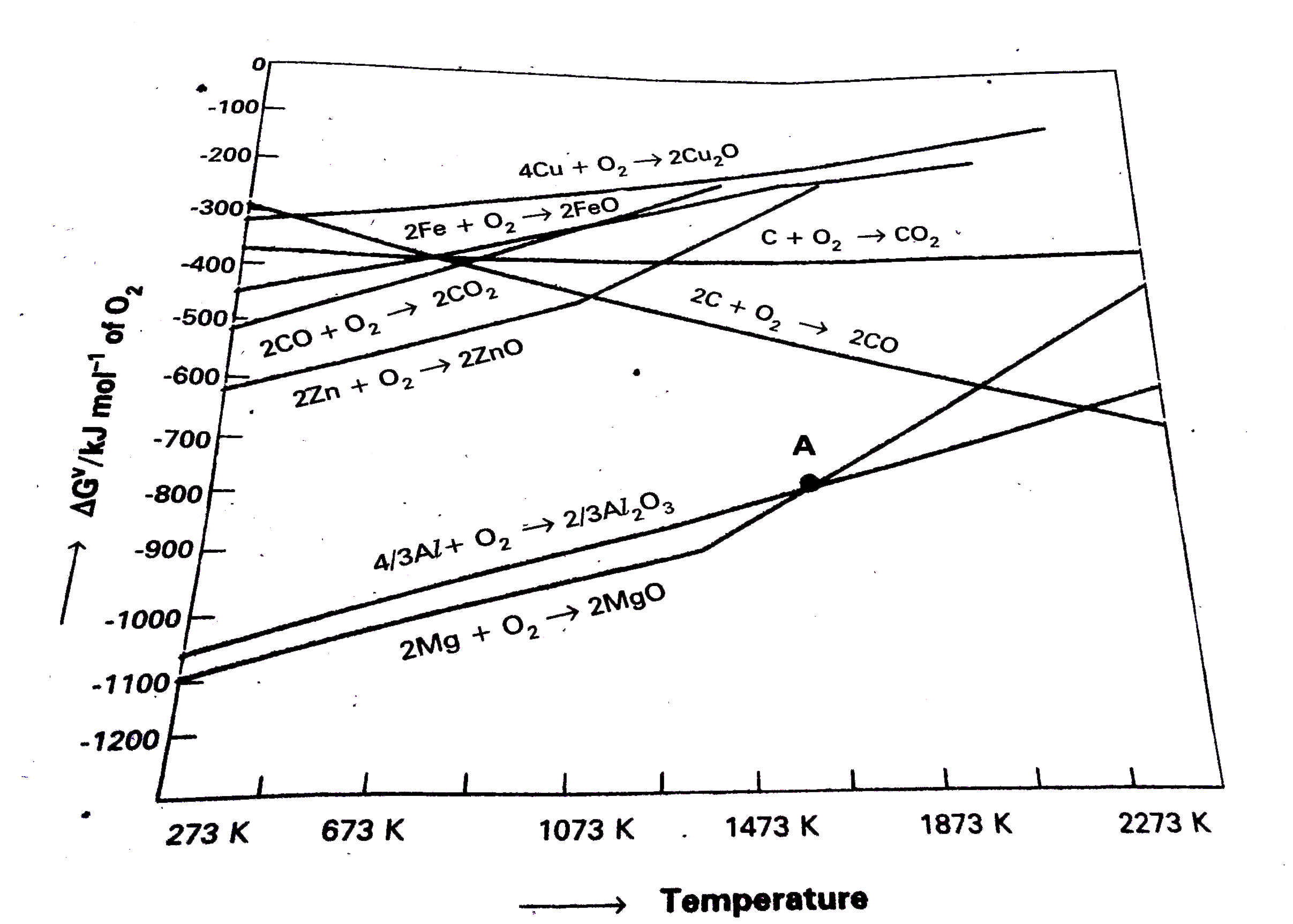InterviewSolution
Saved Bookmarks
| 1. |
What is Ellingham diagharm ? What information can be known from this in the reduction of oxides? |
|
Answer» Solution :The graphical representation of Gibbs energy which provides a sound basis for considering the choice of REDUCING agent in the reduction of oxides. This graphical representation Is known as Elligham diagram. `rarr`This diagram helps us in predicting the feasibility of thermal reduction of an ore. `rarr`The Criterion of feasibility of a REACTION is that at a given temperature ,Gibbs energy of the reacation must be negative. `rarr`Ellingham diagram normally consists plots of`DeltaG^(@)`vs T for formation of oxides ofelements . `rarr` The graph indicates whether a reaction is POSSIBLE or not , i.e. , the tendency of reducationwith a reducing agents is indicated with a reducing agent is indicated. `rarr` The reducing agent forms its oxide when the metal oxide is reduced. The roel of reducing agent is to MAKE the sum of `DeltaG^(@)`values of the two reactions negative. `rarr`out of C and CO , carbon monoxide (CO) is a better reducting agent at 673K. `rarr` At 983K (or) above coke (C) is better reducing agent., `rarr`The above observations are form Ellingham diagam . , Zinc is not extracted from zinc oxide through reduction by using CO. Explanation : `2Zn+O_(2)rarr 2ZnO,DeltaG^(@)=-650KJ` `2CO+O_(2)rarr2CO_(2)'DeltaG^(@)=-450KJ` `2ZnO+2COrarr2Zn,2CO_(2')DeltaG^(@)=200KJ` `DeltaG^(@)`= positive indicatis that reaction is not FEASIBLE. The above fact is explained on the basis of Ellingham diagram. 
|
|